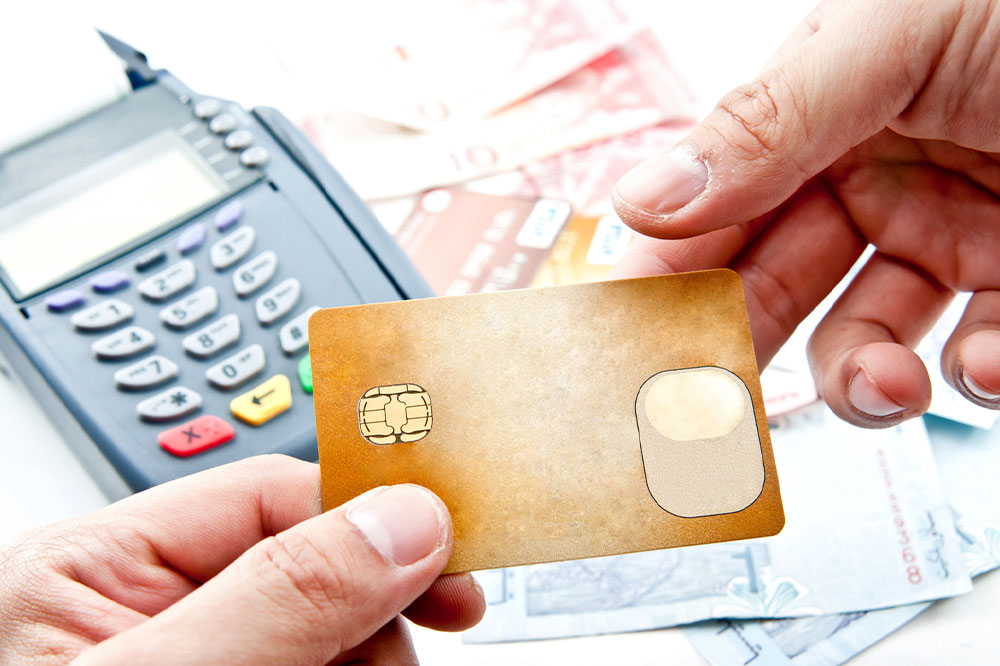
A look at the modes and advantages of electronic payments
Electronic payments involve transferring money using digital or electronic channels. E-payments are carried out through debit cards, credit cards, or internet banking. You can also choose options like e-wallets and cryptocurrencies. E-payments are convenient, quick, and effective as money is transferred directly to the receiver’s account or electronic wallet, eliminating the need to carry cash. So, you only need a bank account and an internet-enabled phone to pay for products and services.
Modes of e-payment
Electronic payment processing can be carried out in various ways. Here are some of the more common methods:
Credit or debit cards: Here, the cardholder needs to enter the relevant card details that initiate the online transaction. Credit cards facilitate instant payment while allowing you to postpone actual payment till the end of the month. Each online transaction can be accompanied by discounts and rebates that can be applied to the next purchase. Using a credit or debit card to shop online can help you save money on gas, groceries, and other items.
Internet banking: Internet banking involves digitally transferring money from one bank account to another. So, all you need is your and the receiver’s bank account information. Every payment is accompanied by a confirmation notification, making the transaction safe and convenient. Internet banking provides users with practically every service available at a physical branch, such as deposits, transfers, and online bill payments.
E-wallet: E-Wallets are online prepaid accounts that hold customer account data electronically. So, payments are quicker and easier as you don’t have to enter details repeatedly. An e-wallet can hold money, coupons, loyalty cards, and store IDs. It also provides a variety of payment options like online, peer-to-peer, and in-person payments.
Virtual payment card: A virtual card is a 16-digit number produced randomly and serves as a “token” that can only be used only once and for the given amount. These cards function in the same way as traditional cards while eliminating the need to carry a physical card, which ensures a safe and secure transaction.
Payment service provider: PSP is a third-party service that offers online services to retailers so that they can accept electronic payments. PSPs offer multiple payment methods through a single channel so customers can easily choose from various options, helping ensure customer satisfaction.
Cross-border/FX payment: Businesses can send and receive money worldwide using cross-border and foreign exchange payments. This is done through wire transfers, forward contracts, and cross-currency transactions. These payments are verified at multiple levels in each country to ensure they are safe and work as intended.
Advantages of e-payments
Time-saving option: With e-payments, you can make purchases with a tap or swipe. Within a few minutes, transactions are processed, and the receiver gets the money. Repetitive and manual operations are automated using e-payments, which saves a ton of time.
Efficient: Electonic payment processing eliminates the need for customers to visit banks and use ATMs to withdraw cash for transactions. Further, they allow customers to make transactions and shop online, removing the need to visit stores. Additionally, as there aren’t any time or place constraints, e-payments can be initiated from anywhere in the world.
Secure: Cash transactions come with their own set of risks, including the possibility of theft and loss. Security protocols of e-payment systems ensure the safety of your money. Your transaction is safeguarded by banks using highly secure procedures through PINs (personal identification numbers) and OTPs (one-time passwords).
Certainty: E-payments make it easy to access receipts on your phone and digital wallets, which helps people keep track of money spent and serves as proof. Banks send emails and messages following each transaction. Any transmission delays are resolved within 24 to 48 hours, resulting in smooth operation.
Contactless option: During the COVID-19 pandemic, electronic payments were extremely helpful in limiting contact. People could make swift payments using applications or internet banking, reducing the fear of spreading or contracting the virus through physical contact.
Reduced transaction costs: Payment systems use payment gateways and the payment processor for the sender to enter the card information and then verify those details. This payment processor can charge high fees. By adding e-payment options, businesses can save a lot of money on transactions as they only have to pay a fixed fee.
Wide range of options: E-payment allows users to choose from a variety of payment methods, such as cards, online banking, and e-wallets. This allows the user to choose a method that best serves their needs.
A significant behavioral shift in consumers requires that businesses accept the various electronic payment methods and simplify transactions. Electronic payment processing has made paying bills more convenient, efficient, and advantageous for both the sender and the recipient.




